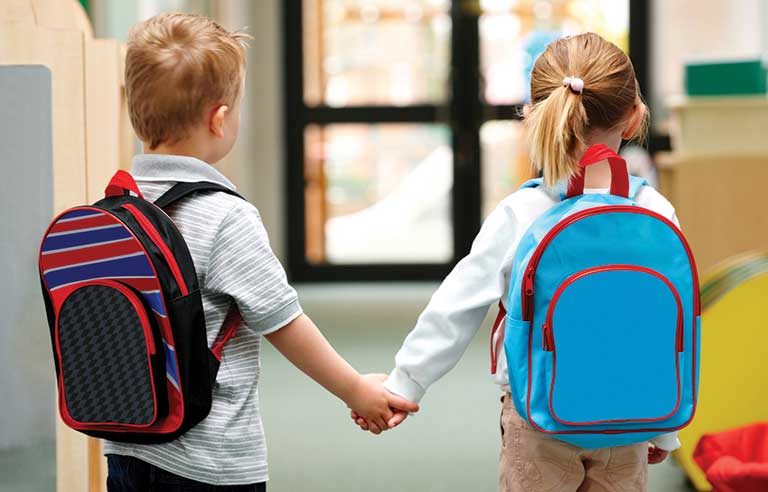How heavy should children’s backpacks be? Researchers explore

Granada, Spain — Scientists from Spain and England have two words for students when it comes to their backpacks: Lighten up.
Using a three-dimensional optical motion capture system “similar to those used in animation films and video games,” researchers from the University of Granada and Liverpool John Moores University in England assessed the body movement and posture of 49 Spanish primary school students between the ages of 7 and 12 as the students carried and pulled rolling backpacks, a June 27 press release states.
The analysis was conducted while the students walked freely and carried no weight, carried a backpack, and pulled a rolling backpack. With the wheeled backpack, the students pulled loads that were 10%, 15% and 20% of their respective body weights.
Results showed that the greatest impact on the students’ bodies when carrying and pulling backpacks was on the hip and torso. Additionally, pulling a backpack with wheels resulted in less impact on the children’s bodies, allowing more weight to be pulled.
The researchers concluded that students who use rolling backpacks should pull no more than 20% of their body weight. Additionally, and in line with previous research, children carrying backpacks should avoid loads heavier than 10% of their body weight.
The American Chiropractic Association, however, warns that rolling backpacks should be used “cautiously and on a limited basis by only those students who are not physically able to carry a backpack” because they can “clutter school corridors, replacing a potential back injury hazard with a tripping hazard.”
ACA cautions that carrying backpacks that are too heavy can cause back, neck and shoulder pain, as well as bad posture.
An ergonomic backpack, according to the National Safety Council, should not be wider than your child’s torso or hang more than 4 inches below the waist. It also should have:
- Padded, adjustable shoulder straps.
- A padded back to prevent items inside from poking your child.
- Chest and waist straps to distribute weight evenly.
- Multiple compartments to position contents effectively.
- Compression straps to stabilize contents.
The study was published online May 14 in the journal Applied Ergonomics.
Post a comment to this article
Safety+Health welcomes comments that promote respectful dialogue. Please stay on topic. Comments that contain personal attacks, profanity or abusive language – or those aggressively promoting products or services – will be removed. We reserve the right to determine which comments violate our comment policy. (Anonymous comments are welcome; merely skip the “name” field in the comment box. An email address is required but will not be included with your comment.)
